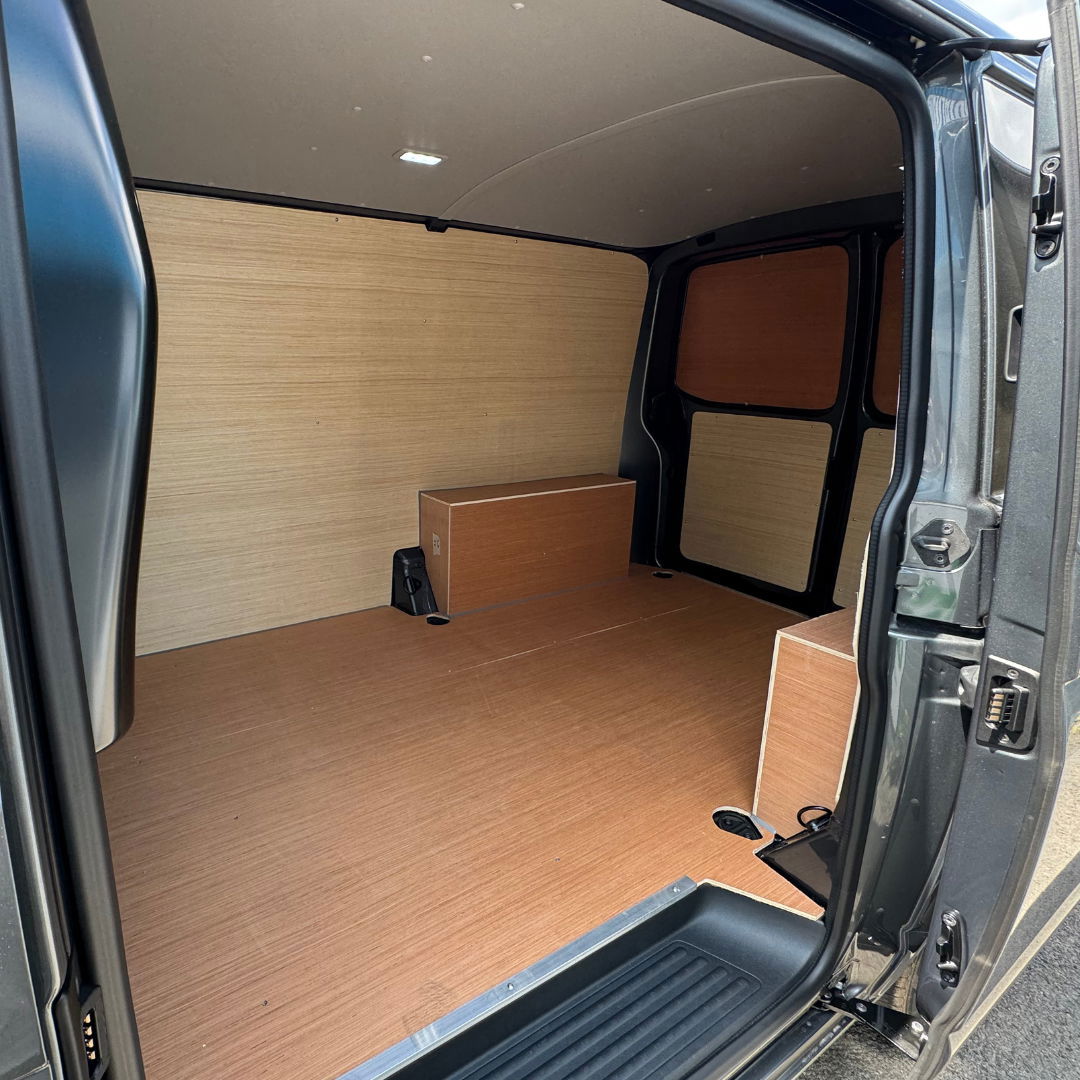When it comes to optimising your van for various purposes—be it for business, travel, or personal use—deciding whether to ply line it can significantly impact its functionality and durability. Ply lining involves fitting panels to the interior walls, floor, and sometimes the ceiling of the van. These panels can be made from different materials, each with its own advantages and disadvantages. Let's explore the pros and cons of ply lining your van, focusing on wood, plastic, and rubber options, to help you decide what is best for your needs and business.
Pros of Ply Lining Your Van
1. Enhanced Protection
- Interior Damage Prevention: Ply lining acts as a shield for the van’s metal body, protecting it from scratches, dents, and other damages that can occur from cargo shifting during transit.
- Rust Prevention: By covering the metal surfaces, ply lining helps prevent moisture buildup, which can lead to rust and corrosion over time.
2. Improved Insulation
- Temperature Regulation: Ply lining provides an additional layer of insulation, helping to maintain a more stable temperature inside the van. This can be particularly beneficial for vans used as campervans or for transporting temperature-sensitive goods.
- Noise Reduction: The panels can dampen road noise, making the interior quieter and more comfortable, especially during long drives.
3. Enhanced Durability and Longevity
- Structural Support: The lining adds a layer of strength to the van's structure, which can help in maintaining its integrity under heavy use.
- Long-term Savings: By protecting the interior from damage and rust, ply lining can reduce maintenance costs and potentially extend the life of your van.
4. Customisation and Versatility
- Ease of Modification: Ply lining provides a solid base to which shelves, hooks, and other fittings can be easily attached, allowing for greater customisation based on your specific needs.
- Aesthetic Appeal: A neatly lined van interior can look more professional, which is particularly important for businesses that use vans for client visits or service calls.
Types of Ply Lining: Wood, Plastic, and Rubber
Wood Ply Lining
Pros;
- Durability: Wood ply lining is extremely durable and can withstand heavy use. It provides excellent protection against impacts and abrasions.
- Insulation: Wood offers better thermal and acoustic insulation compared to plastic and rubber, making the van more comfortable.
- Customisation: It's easy to modify, cut, and fit, allowing for a high degree of customisation.
- Aesthetic: Wood gives a professional and high-quality finish, enhancing the overall look of the van's interior.
Cons;
- Weight: Wood is heavier than plastic and rubber, which can affect payload capacity and fuel efficiency.
- Cost: Quality wood ply lining can be more expensive than other materials.
Plastic Ply Lining
Pros;
- Lightweight: Plastic is much lighter than wood, helping to preserve payload capacity and fuel efficiency. -
- Waterproof: Plastic is completely waterproof, making it ideal for environments where moisture is a concern.
Cons;
- Durability: Plastic can be less durable and more prone to cracking or breaking under heavy impact.
- Insulation: Offers poor thermal and acoustic insulation compared to wood.
- Customisation: More difficult to modify and may not offer the same level of customisation as wood.
Rubber Ply Lining
Pros;
- Impact Resistance: Rubber provides excellent protection against impacts and is highly durable.
- Non-Slip Surface: The textured surface of rubber lining prevents cargo from shifting, adding an element of safety.
Cons;
- Weight: Rubber can be quite heavy, similar to wood, affecting payload capacity and fuel efficiency.
- Cost: High-quality rubber lining can be expensive.
- Insulation: While it provides some sound dampening, it is not as effective as wood for thermal insulation.
Making the Right Choice for Your Van
When deciding on the type of ply lining for your van, consider the following factors:
- Usage: Determine how you will use your van. For heavy-duty use, wood or rubber might be more suitable due to their durability. For lighter use, plastic could be a cost-effective and lighter option.
- Budget: Consider your budget. While wood and rubber offer more durability, they are also more expensive. Plastic might be a more affordable option if cost is a primary concern.
- Weight and Payload Capacity: If maintaining a higher payload capacity is important, the lighter weight of plastic might be beneficial. However, if durability is more critical, the added weight of wood or rubber may be justified.
- Environmental Conditions: Think about the environment in which your van will operate. If you expect a lot of moisture, plastic's waterproof nature could be advantageous.
- Customisation Needs: Consider how much customisation you require. Wood offers the highest level of customisation flexibility, making it easier to add shelves, hooks, and other fittings.
Ply lining your van offers substantial benefits in terms of protection, insulation, durability, and customisation, making it a worthy investment for many van owners. Each material—wood, plastic, and rubber—has its unique advantages and disadvantages. By carefully evaluating your specific needs, usage, budget, and other factors, you can make an informed decision that best suits your van’s purpose and your personal or business requirements.
